Scuba Diving Legends Describe their Most Unforgettable Dive
Rarely is it the deepest dive—or the most adrenaline-charged—that anchors itself in the mind as the most memorable or most rewarding dive of a career. Hardly.
The moments that stay at the mental forefront are the ones that change us somehow, that change what we know—what we thought was possible on the planet.
We had the chance to sit down with National Geographic underwater photographer and Rolex Ambassador David Doubilet; oceanographer, author and explorer Sylvia Earle; and Philippe Cousteau Jr. and Ashlan Gorse Cousteau, stars of the Travel Channel show Caribbean Pirate Treasure, to hear about their most unforgettable dives.
David Doubilet
Scoresby Sund, Greenland
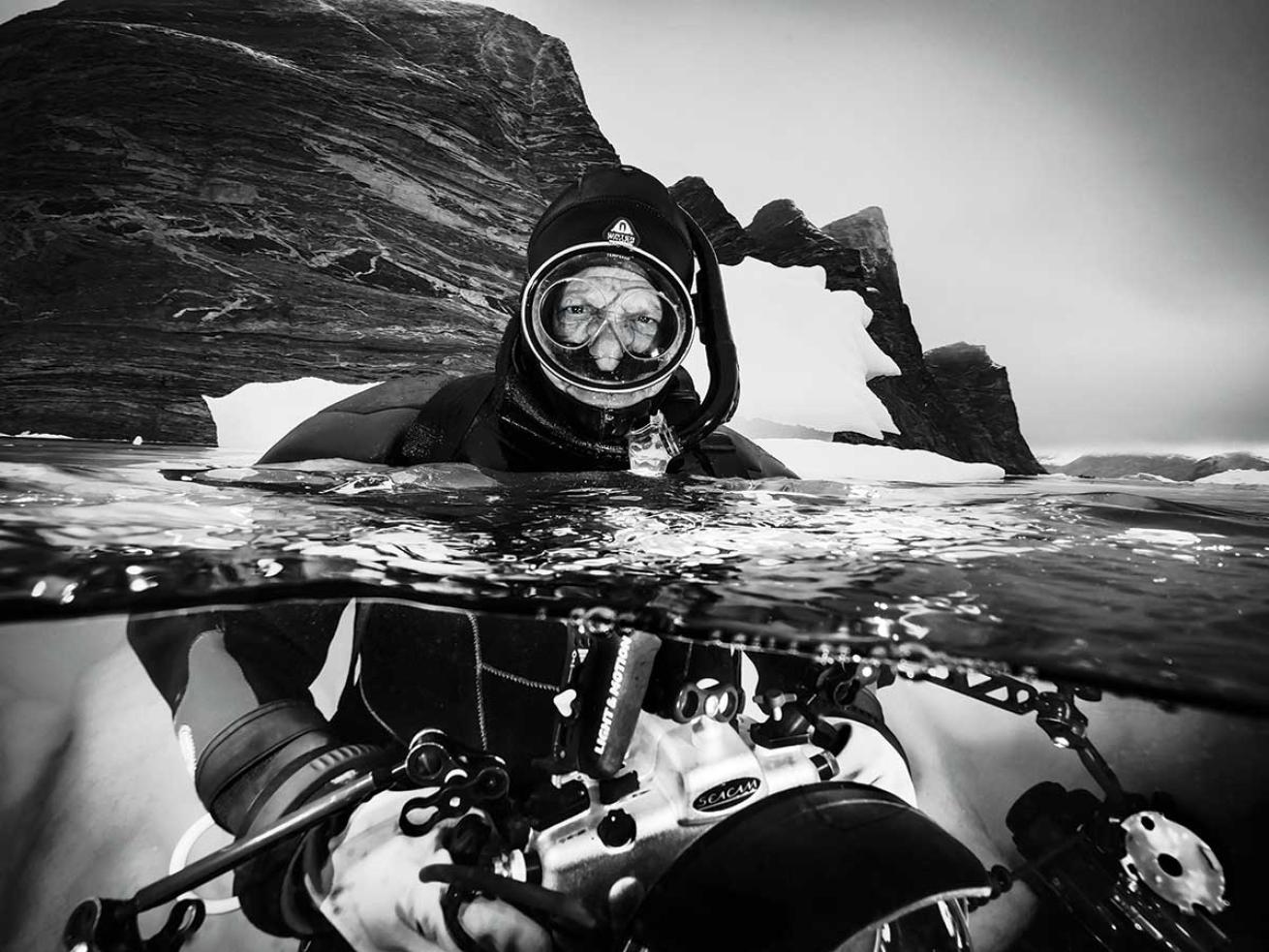
Jennifer HayesBio: Underwater photographer David Doubilet is the most published contributor to National Geographic magazine, with 75 features to his credit. He also has authored 12 books showcasing the beauty and diversity of the sea. A Rolex Ambassador, he has been inducted into the International Scuba Diving Hall of Fame and the Royal Photographic Society.
I’ve been diving with sharks in French Polynesia; crocodiles in Cuba; sea lions in Australia; and on the USS Arizona in Pearl Harbor. And the one thing I completely love, because every second is so different, is icebergs. They are the ultimate metaphor for the ocean. You see only a little bit above and the rest is below, unseen and sculptural. Mysterious, the ultimate pop-up art.
Iceberg diving looks easy, but it’s incredibly dangerous. You have to pick and choose. Never approach an iceberg with holes—they will roll. I’ve been on a Zodiac that was about to roll into an iceberg. Just before the Zodiac rolled, the iceberg rolled. The bottom came up over the top, and the top went over the bottom. Had we been in the water at that moment, we would be dead.
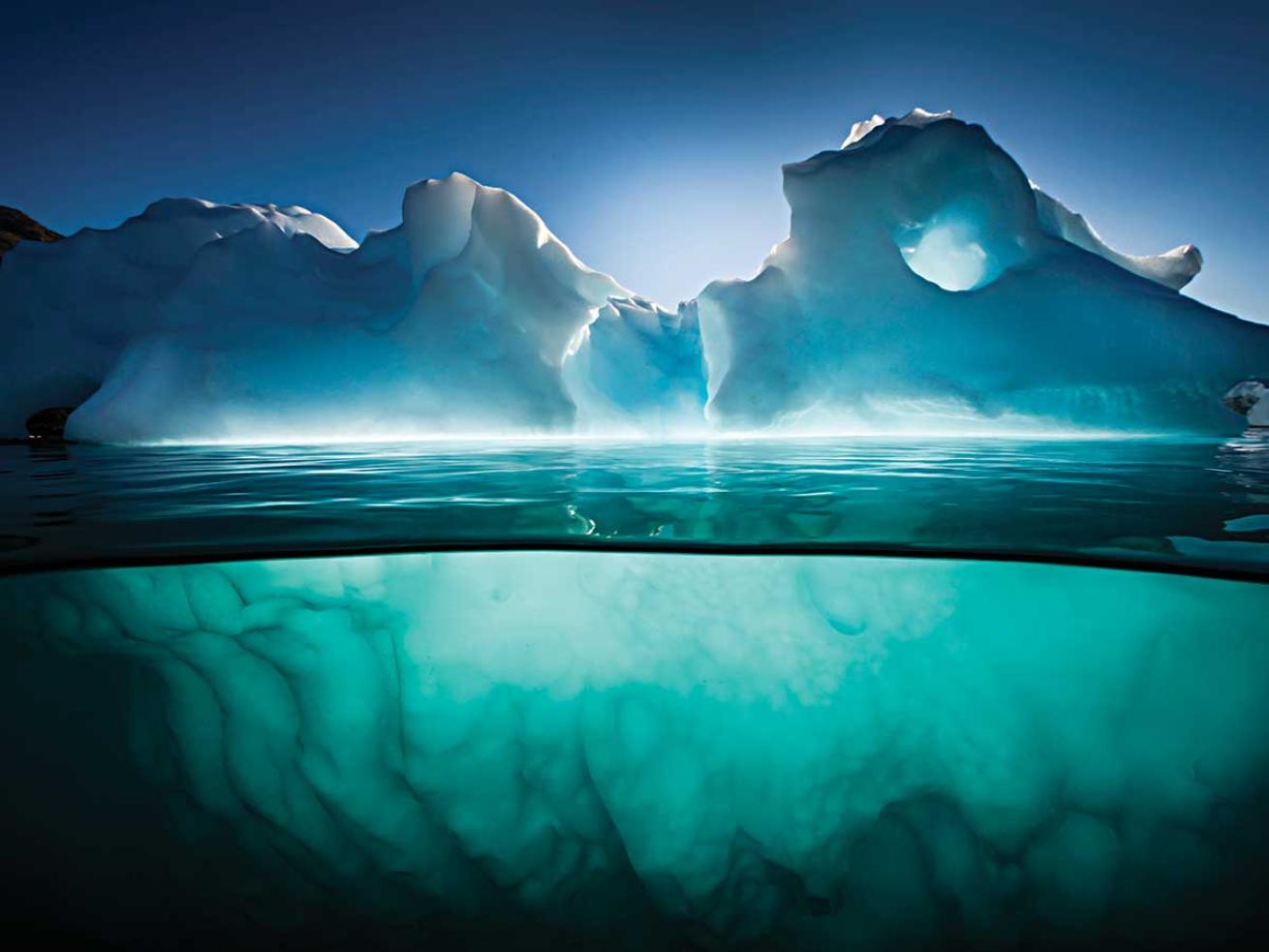
David DoubiletDavid Doubilet sees icebergs like this one in Scoresby Sund as a metaphor for the sea: Only a small fraction is visible to most humans.
I’m fortunate to be working with National Geographic Lindblad Expedition ships, which get us to areas that you can’t get to otherwise. Each boat is a magic carpet to places that are difficult to find, such as the west coast of Greenland and Scoresby Sund. It’s 125 miles long and it snakes in—if you’re lucky, it’s ice-free for a few weeks in September, allowing you passage. There, we found a glittering spot. In most places in Greenland, the ice is drying up and sliding into the sea. If they drift into a small area, they ground out, creating iceberg graveyards.
You get in the water and it’s like diving in a frozen daiquiri—but even colder. The mother of all ice-cream headaches. You have an hour, maybe an hour and a half, before your hands get too numb to shoot.
So you swim around to find the best image. These are damn exciting pictures to take, but they’re extremely difficult. Each one is completely different. They are not all good icebergs.
Some people come to the Arctic for the animals. We come for the ice. It’s magnificent. It’s maybe the greatest expression of what this planet is all about.
Sylvia Earle
Flower Garden banks National Marine Sanctuary
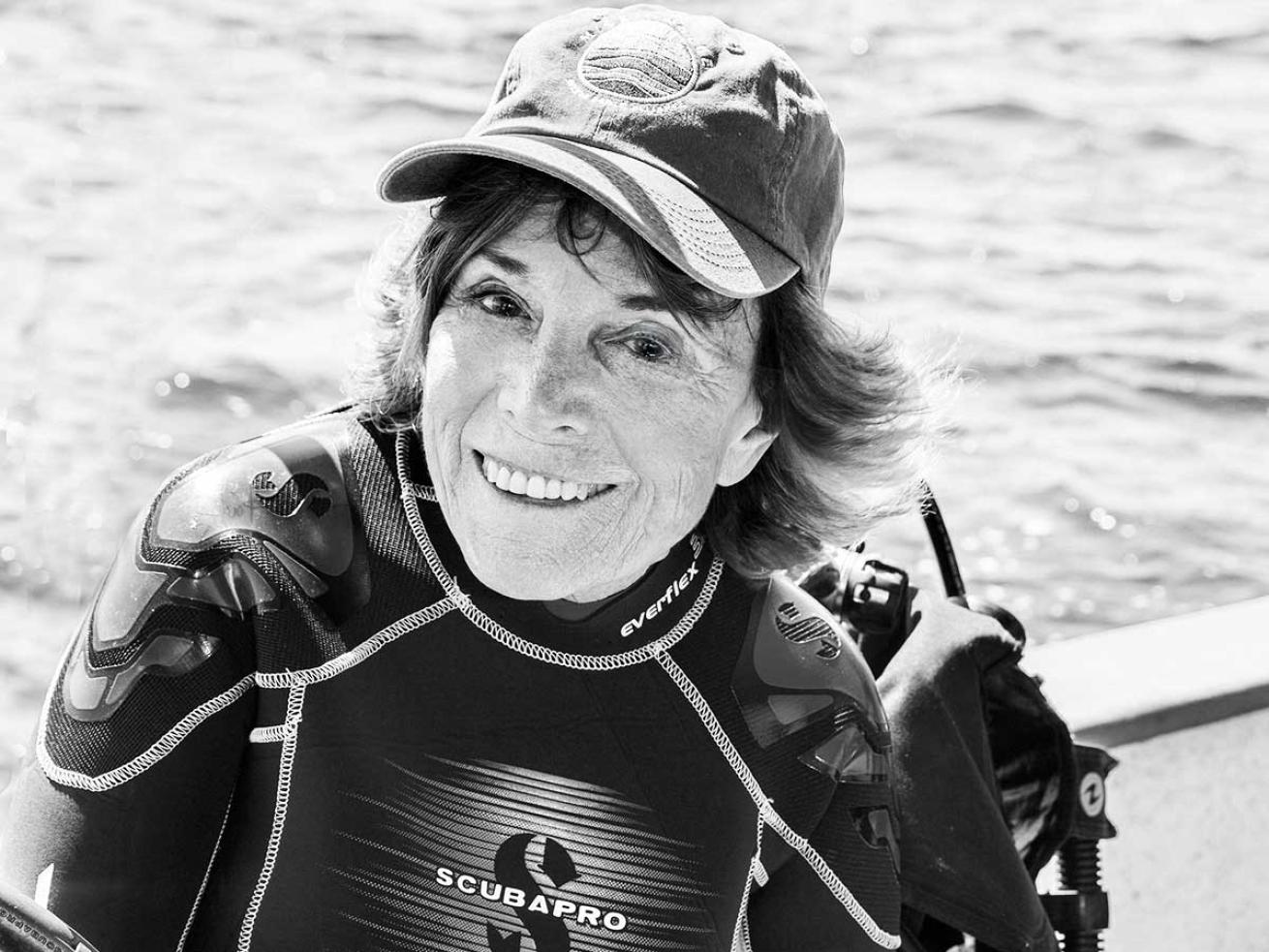
Courtesy Kip Evans/Mission BlueBio: Oceanographer Sylvia Earle is the first woman to have served as chief scientist at NOAA, later becoming the National Geographic Society’s first explorer in residence. Earle is president of Mission Blue, a global coalition for ocean protection.
It was 9:15 in the evening when we witnessed the reef exploding with life. It was August, sometime in the 1990s, and a group of us were about 60 feet deep on a reef at the Flower Garden Banks National Marine Sanctuary, one of 14 of the United States’ underwater sanctuaries.
Seeing a coral spawning is the chance to see not just rounded heads of coral releasing hundreds, if not thousands, of eggs into the sea; it’s an opportunity for lots of things to get into the act. Brittle sea stars were standing on their tippy-toes to get the spawn. Fish were acting like thieves. It was like being in a snowstorm but every flake was a potential coral. The next morning on the surface, I saw this collection of eggs floating away to repopulate other areas.
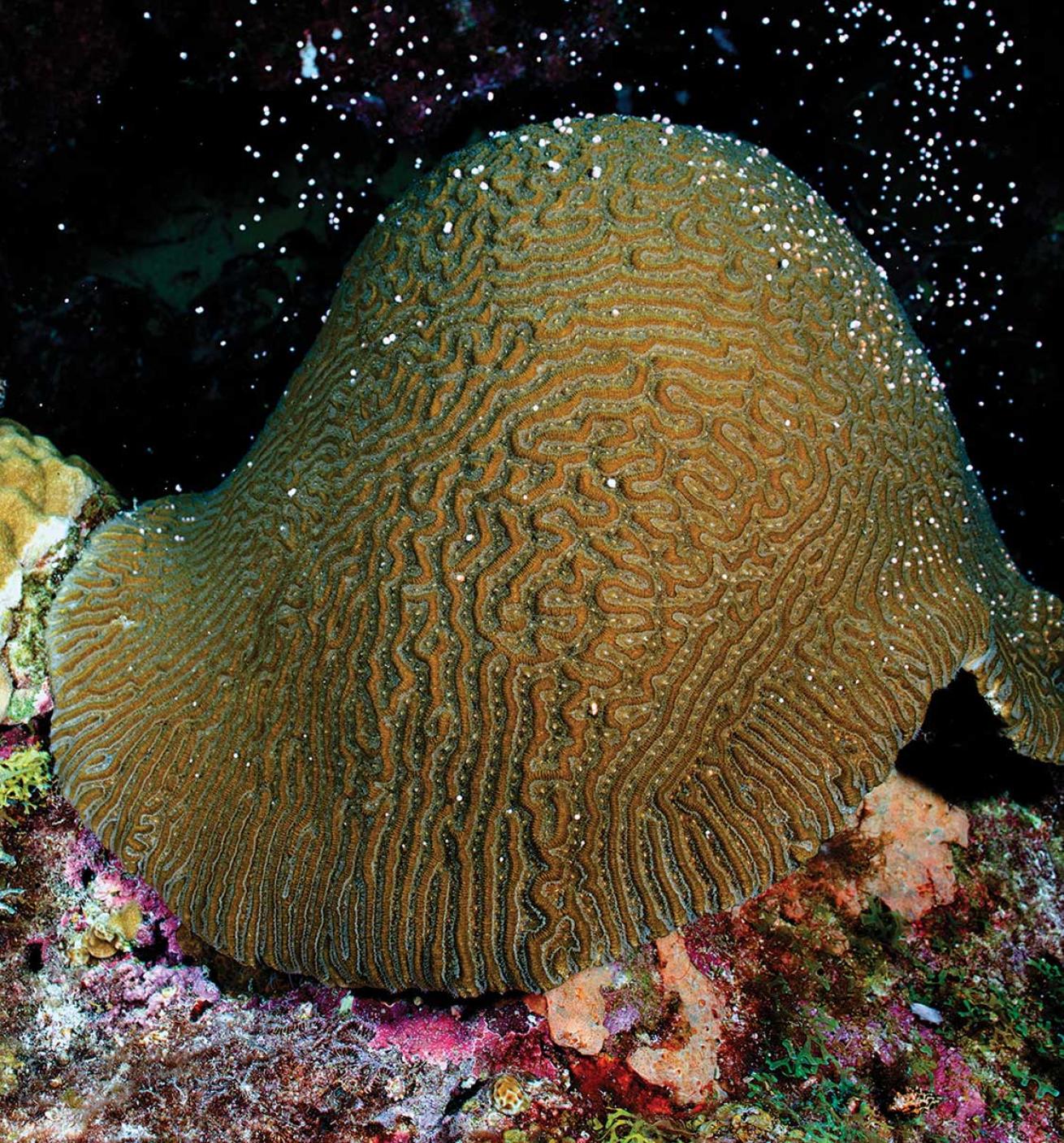
Jessica CancelmoPseudodiploria strigosa spawns at the Gulf of Mexico’s Flower Garden Banks, off Texas.
Every coral reef will spawn—there seems to be a moment where everybody says, “Now is the time.” Something has to be just right in terms of the phase of the moon and the temperature and conditions of the water. My first knowledge of such a phenomenon came from watching 1992’s Coral Sea Dreaming by David Hannan. If anyone had seen a coral spawning prior to that, they hadn’t reported it.
If you witness a spawning for even a moment, you are lucky. We were seeing something that has been going on for hundreds of thousands of years but has only been witnessed in recent times because of scuba. We are newcomers to the sea. The most important thing about scuba is the access that it gives us to the sea. You can become acquainted with creatures in ways that you can’t if you’re flying by. You get to know the fish as individuals, just like how Jane Goodall got to know the chimpanzees.
In the same way, fish all have faces. They all have personalities. The gift of scuba allows us to have time in this world. Most of all, events like the coral spawnings give me such a sense of joy that renewal of the ocean does take place. It’s glorious.
Philippe Cousteau Jr. & Ashlan Gorse Cousteau
Marshall Islands

Philippe Cousteau Jr. & Ashlan GorseBios: Philippe Cousteau Jr., grandson of explorer Jacques-Yves Cousteau, is the founder of EarthEcho International, which guides youth working to save the oceans. Along with his wife, Ashlan Gorse Cousteau of E! News network, he co-hosts the TV show Caribbean Pirate Treasure on the Travel Channel.
PC: In 2015, we heard rumors that folks had been diving out in the Marshall Islands and reports of massive aggregations of gray reef sharks. It seemed so unlikely, given that this area is right near Bikini Atoll, where the largest nuclear bomb the U.S. ever tested was detonated. But we were curious, so we showed up. We started chumming. We saw them immediately at the back of the boat.
AGC: They were like puppies, pushing each other out of the way to look at us.
PC: I had never seen shark behavior quite like that. Here in this place where there had been the largest thermonuclear bomb, there is an explosion of life….There were easily 60, 70 sharks.
AGC: We counted and realized there were almost 100. Gray reef sharks are on the smaller side. They’re very quick. Very agile and very curious.
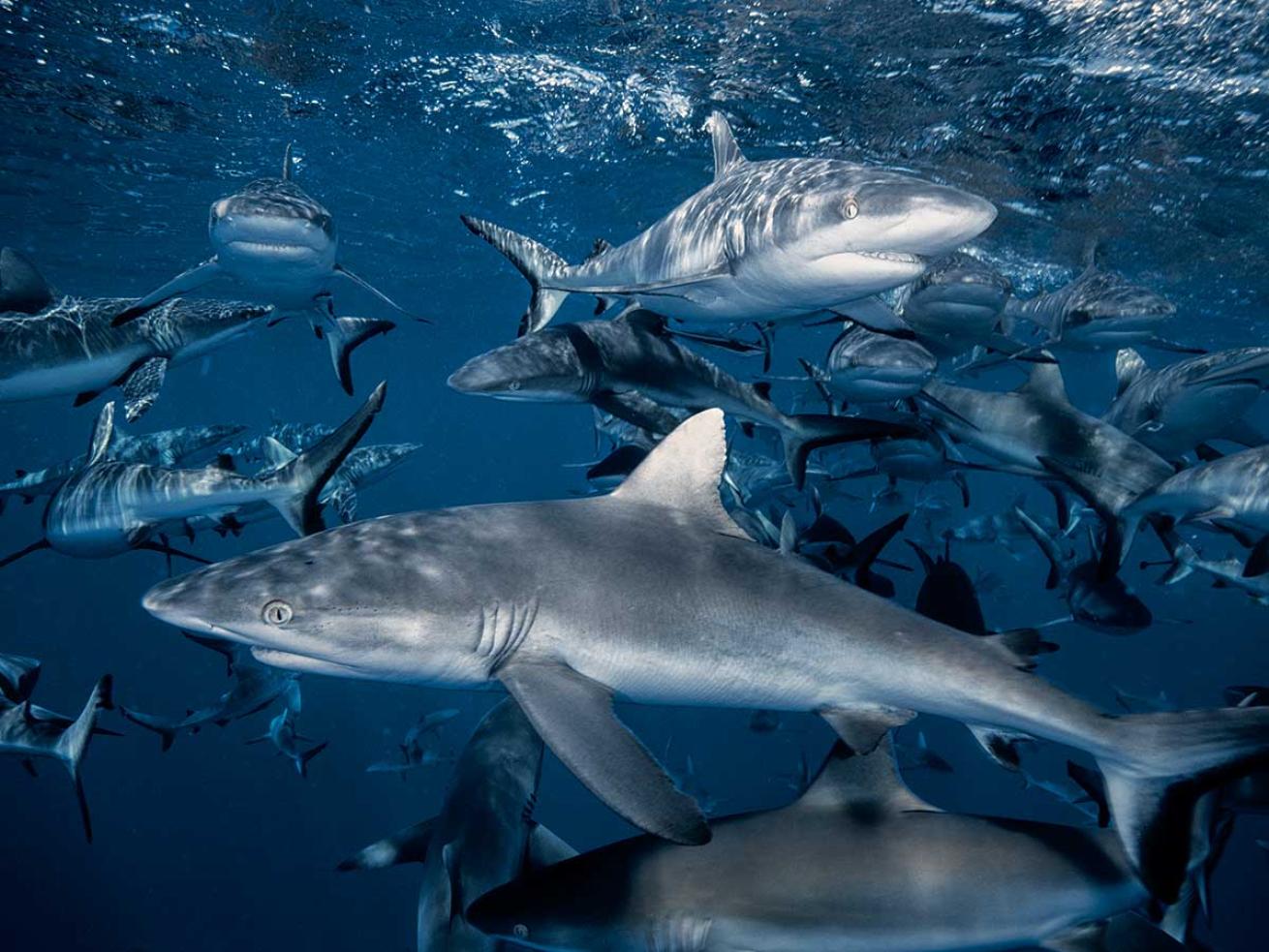
Doug PerrineGray reef sharks aggregate en masse in the Marshall Islands.
PC: The understanding is that gray reef sharks are not migratory. If all land nearby has been wiped out, and other atolls are hundreds of miles away, then the question is, how did they repopulate? We tagged 17 of them to try and find out what kind of migratory patterns they maybe take.
AGC: Wherever we went, these sharks followed us. From atoll to atoll. The visibility was incredible—the best I had ever seen on any dive, easily 250 feet. The Marshall Islands are the most removed from humanity that I have ever been. There is something so thrilling about literally being in the middle of nowhere on the ocean that is exhilarating.
PC: That’s what makes it amazing. It’s one of those iconic places.
AGC: It surpassed anything we could have imagined. We dived with so many sharks that sometimes we couldn’t see the water above. For those divers or adventure-seekers who want a once-in-a-lifetime experience that only a handful of people have done, it’s the Marshall Islands.










